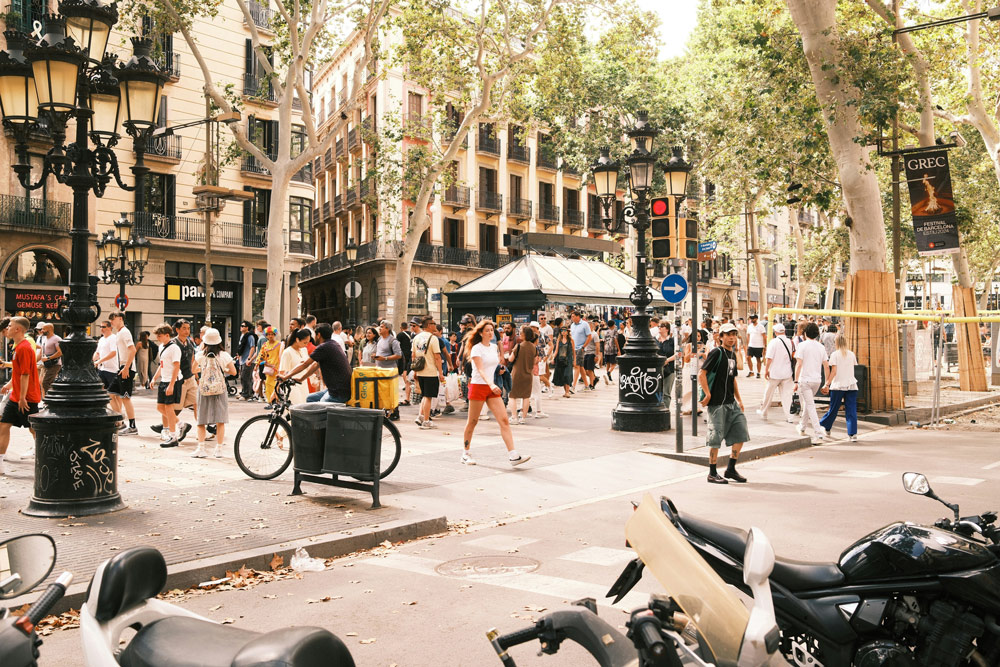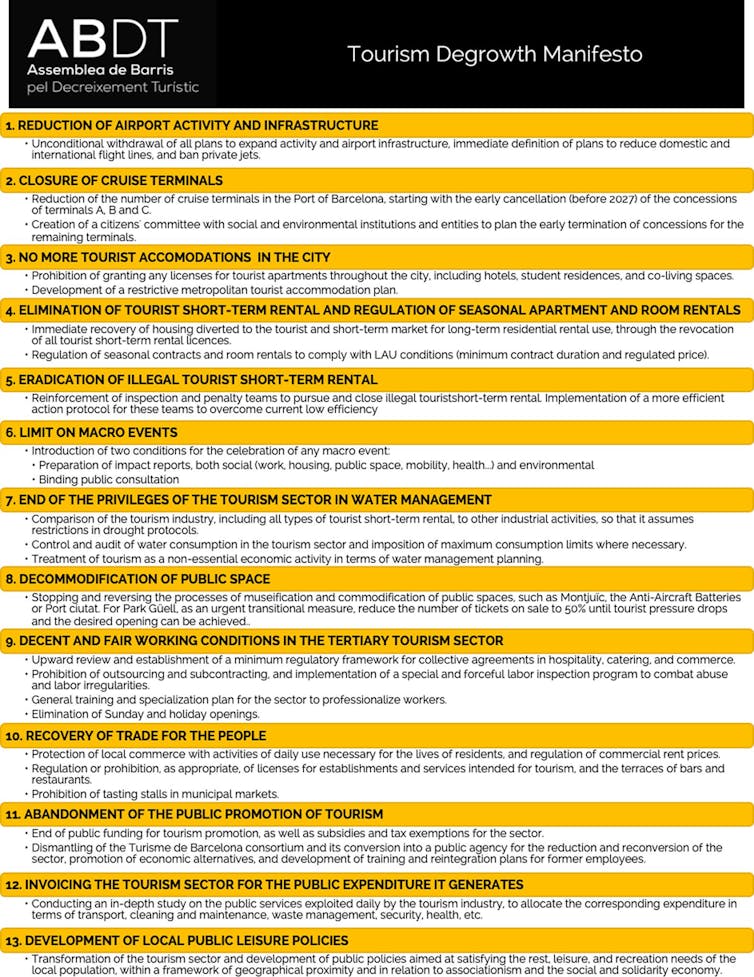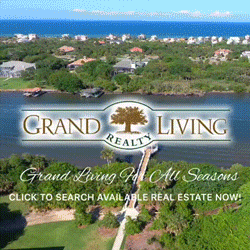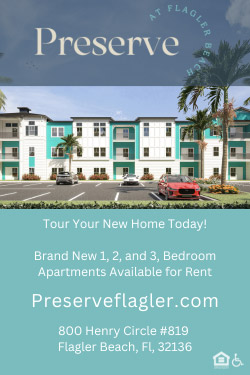
By Claudio Milano, Antonio Paolo Russo and Marina Novelli
On April 27 2024, near the Sagrada Familia in Barcelona, a touring bus was blocked, sprayed with water pistols, and a banner bearing the slogan “let’s put out the tourism fire” was stuck to its front. It was a headline-grabbing protest against the stranglehold tourism holds over the city, and underscored growing tensions between touristification processes and an increasingly vocal local backlash.
Large-scale protests have made Barcelona synonymous with social resistance to the negative impacts of predatory and extractive tourism, but it is far from alone: popular destinations such the Canary Islands, Málaga, and the Balearic Islands have all seen massive protests against the excesses of tourism over the last year.
People are fed up, and the writing is quite literally on the wall – tourist apartments graffitied with the slogan “tourists go home” have now become an almost ubiquitous sight in many Spanish cities. However, it is not individual tourists that are to blame, but rather the excessive reliance on tourism which has, over several decades, gradually pushed countless residents out of their homes and neighbourhoods.
But how did we get here? As international travel rebounded in the wake of COVID-19 lockdowns, Barcelona and other Mediterranean cities saw tourists return in remarkable numbers. This led to mounting social unrest, as local communities became increasingly frustrated with how tourism has reshaped urban spaces at their expense.
Residents’ concerns range from housing shortages and job insecurity to environmental damage. The privatisation of public spaces is also high on the agenda in Barcelona, exacerbated by high-profile events, such as the 2024 America’s Cup and Formula One Grand Prix, which brought little benefit to local residents.
The ongoing backlash signals a “we’ve had enough” moment that can no longer be dismissed as mere inconvenience or NIMBYism. Instead, it reflects structural inequalities and deeper conflicts over urban space, social justice, and the power dynamics that underpin the tourism sector’s unchecked growth.
Evolving activism
Anti-tourism activism in Barcelona traces back to the mid-2010s, when neighbourhoods like Barceloneta first challenged tourism’s role in displacing residents. Since then, groups such as the Neighbourhood Assembly for Tourism Degrowth (ABDT) have pushed back against policies fostering excessive reliance on the tourism economy.
The ABDT notably prefers the term “touristification” to “overtourism”. According to them, the concept of “overtourism” risks depoliticising the issue, framing it as a simple problem of too many visitors. Instead, they say, the problems are a result of the structural inequalities tied to capitalist accumulation, tourism’s extractive nature, and a sector that funnels community wealth into private hands.
What distinguishes this current wave of activism from its predecessors is a shift from blunt opposition to providing organised, constructive proposals. At one major demonstration in Barcelona in July 2024, activists presented a manifesto calling for clear measures to reduce economic dependence on tourism, and for a transition towards an eco-social economy.
Key demands included ending public subsidies for tourism promotion, regulating short-term rentals to prevent housing loss, cutting cruise ship traffic, and improving labour conditions with fair wages and stable work schedules. The manifesto also urged leaders to diversify the economy away from tourism, repurpose tourist facilities for social use, and develop programs to support precarious workers.

Milano et al. 2024
The movement shows no signs of slowing down. Over the weekend of April 27 2025, exactly one year after the water pistol episode, the Southern Europe against Touristification Network gathered in Barcelona to agree on a shared political agenda. They also convened a coordinated demonstration across multiple cities in Southern Europe for June 15 2025.
Marginalised groups hit hardest
Anti-tourist activism is often dismissed by those with a vested interest in tourism, labelled as either “tourismphobia” or “NIMBYism” – a desire to protect one’s own local area from unwanted development (derived from the acronym of “not in my back yard”).
These labels ignore the fact that tourism-driven economies most strongly impact marginalised groups with little political power, such as tenants, migrants and precarious seasonal workers, and disenfranchised young people. Social movements in Mediterranean cities have taken this to heart, broadening anti-tourism activism to address more general government inaction on housing, labour rights, climate action, and the defence of public space.
These movements confront the complex, interconnected challenges of touristification, including social division of labour, gender inequalities, and capital concentration. They also, importantly, are living proof that many residents want to prioritise community wellbeing over economic growth.
Academics and politicians are failing
Both policy makers and academics are falling short in addressing protesters’ concerns. Countless studies focus on topics like space management, green tourism, or tourism as a tool of empowerment. Few, however, explore the experiences of people living in tourism hotspots, or how the sector produces precarious labour conditions, social exclusion and environmental injustice.
As a result, current policies mostly aim at managing visitors or transport, not at curbing tourism’s growth or addressing power imbalances. This limited approach fails to solve the root causes of the problem, and will only perpetuate inequalities.
Beyond urban transformations, tourism’s reliance on precarious labour is a pressing issue. Many jobs in the sector are low-paid, unstable and highly seasonal. While international organisations and cities’ authorities promote tourism as a driver of economic prosperity and job creation, the question of “what kind of jobs?” is too often overlooked.
Going forward, more grounded, intersectional research is needed, especially longitudinal and ethnographic studies that examine the class, gender, and environmental impacts of tourism. This will, in turn, inform policy-making at all levels, and guide it away from the current predatory, growth-first mindset that is fuelling social conflict and inequalities.
Rather than viewing protests as isolated single-issue nuisances, they should be understood as part of broader struggles for social justice. This movement shows that co-constructed alternatives and proposals need to prioritise community wellbeing over economic growth.
Rethinking urban tourism means reimagining cities as places where residents can thrive, not just survive. To achieve this, we must address the deeper inequalities at the heart of touristification processes.
![]()
Claudio Milano is a Researcher, Lecturer and Consultant at the Universitat de Barcelona; Antonio Paolo Russo is Professor at the Universitat Rovira i Virgili, and Marina Novelli
is Professor of Marketing and Tourism and Director of the Sustainable Travel and Tourism Advanced Research Centre at the University of Nottingham.




























JimboXYZ says
Growing up in Daytona Beach, one could see the tourism being Spring to Labor Day hiring to layoffs. The NASCAR, Bike Weeks & Spring Breaks didn’t benefit those permanent residents. Eventually tourism dollars weren’t worth it for locals, the strain on the sewage plants & other infrastructure was politically motivated. Flagler Beach from top to bottom of the 18 miles seeks higher costs for taxation for +/-18 miles of dune nourishing to outright beach dredging/pier rebuilds. And the locals get stuck with higher property taxes, increased sales taxes in an inflationary economy that incomes don’t pace inflation. Then there’s the AirBNB issues. It’s always just a matter of time before every annual budget ask for more money for the same results of faux betterment evokes the backlash against the economic model. The increases never pay for the inflation and it’s just a financial drain on those that don’t frequent the tourist attractions for it to be anything more than bearing the costs of maintaining another’s profit gold mine of a business operation with none of the benefits of saving said tourism attractions for that tourism industry infrastructure. The one’s selling increases are always the one’s that benefit most from it. The Government types simply see it as a new source of revenue for budget increases that more often than not are salary & wages that are relatively a network of who knows or is related to where that money is steered.
Laurel says
YES! Thank you Flagler Live for seeing more than one side to a story! You deserve credit.
We moved here to get away from the crowds and congestion of our “home” in South Florida. The streets are unbelievable in the off season, not to even consider the tourist season. Homes are priced sky high, and the average American would have to dig deep to live in areas we used to consider the hood. I used to be the bartender of a private club that was on the top floor (28th floor) of the tallest building downtown. Now, it’s hard to find, surrounded by skyscrapers.
The price of everyday needs are off the charts.
Who wants this? Only developers and investors, not the locals. People in the tourist industry who must justify their jobs. World wide investors who buy up houses and condos to rent to vacationers. I was informed that the high rises around my old hometown are owned by investors who do not live locally. Many of these huge buildings are empty. Just investments.
Not only do “marginal’ people suffer, but the average homeowner suffers. They do NOT benefit from tourism, but instead, have to put up with the crowds that only a few benefit from. All the time, we are told how wonderful growth and tourism is for us! Who’s doing the talking? Yeah, think about it.
As homeowners on the barrier island, our benefits of tourism are:
1.) Increased traffic congestion (makes you want to stay home)
2.) Getting stuck on the bridge with dozens of strangers (where are they going?)
3.) Severe lack of parking
4.) Increased taxes and fees
5.) Increased grocery prices
6.) Increased restaurant prices
7.) Cars parked all over back streets creating hazards
8.) Food delivery trucks parked on back streets creating hazards
9.) Vacation rental motels next door
10.) Influx of strangers around our homes
11.) Insane, dangerous, commission approved valet parking
12.) Development, development, development
13.) Homes bought up by vacation rental investors, creating shortages for locals
14.) Breakdown of community
15.) Money prioritized over quality of life for the homeowners and locals
16.) Severe strain on local resources
17.) Gentrification as the locals are pushed out
18.) Decrease in wild lands and wildlife
Same for you on the mainland.
Now, how is this good for us locals? I could go on and on, but you will still be bombarded with how *important* tourism is to you. How it “creates jobs” and how important it is to the economy. Baloney. People seem to forget that others have managed to get along just fine without all the tourists. That their quality of life was better. The natural areas were better. Beautiful wildlife all around us. Interestingly enough, people tend to seek out this quieter life, and then the bullshit starts about how they need this all so important tourism, from those who directly benefit from it financially.
It is already out of control.
Moderation is good. Greed is not.
Laurel says
Did I mention that now you have to drive a slow witted 20 mph in Flagler Beach, a 24/7 school zone, or the insane speed of 35 mph from the Hammock to Flagler Beach? It used to be 55 mph. Now, the righteous car in front of you travels at 28 mph on A1A. Gee thanks.
Pogo says
@Learned chatterers
… well repeated wisdom (Swahili proverb), “When the elephants fight, the grass suffers.” Anything else?